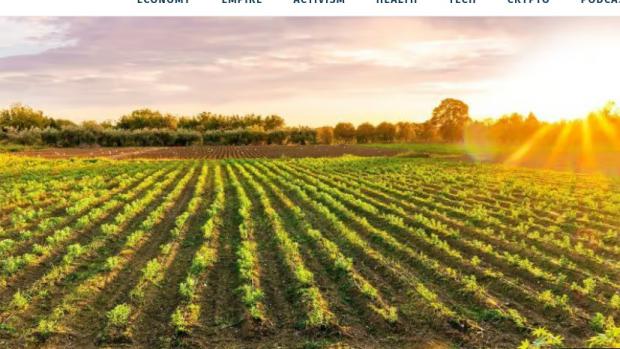
Breaking News
 Can the Polyface Approach Feed the World?
Can the Polyface Approach Feed the World?
 Ernest Hancock on Information, Change, and the Prospects for Liberty (June 26th 2010)
Ernest Hancock on Information, Change, and the Prospects for Liberty (June 26th 2010)
 "Fueled By Billionaires": No Kings Prepares Color-Revolution-Style Mobilization Against Tr
"Fueled By Billionaires": No Kings Prepares Color-Revolution-Style Mobilization Against Tr
Top Tech News
 3D Printed Aluminum Alloy Sets Strength Record on Path to Lighter Aircraft Systems
3D Printed Aluminum Alloy Sets Strength Record on Path to Lighter Aircraft Systems
 Big Brother just got an upgrade.
Big Brother just got an upgrade.
SEMI-NEWS/SEMI-SATIRE: October 12, 2025 Edition
 Stem Cell Breakthrough for People with Parkinson's
Stem Cell Breakthrough for People with Parkinson's
 Linux Will Work For You. Time to Dump Windows 10. And Don't Bother with Windows 11
Linux Will Work For You. Time to Dump Windows 10. And Don't Bother with Windows 11
 XAI Using $18 Billion to Get 300,000 More Nvidia B200 Chips
XAI Using $18 Billion to Get 300,000 More Nvidia B200 Chips
 Immortal Monkeys? Not Quite, But Scientists Just Reversed Aging With 'Super' Stem Cells
Immortal Monkeys? Not Quite, But Scientists Just Reversed Aging With 'Super' Stem Cells
 ICE To Buy Tool That Tracks Locations Of Hundreds Of Millions Of Phones Every Day
ICE To Buy Tool That Tracks Locations Of Hundreds Of Millions Of Phones Every Day
 Yixiang 16kWh Battery For $1,920!? New Design!
Yixiang 16kWh Battery For $1,920!? New Design!
 Find a COMPATIBLE Linux Computer for $200+: Roadmap to Linux. Part 1
Find a COMPATIBLE Linux Computer for $200+: Roadmap to Linux. Part 1
Can the Polyface Approach Feed the World?

By far the most common question people ask me is, "Can the Polyface approach feed the world?"
Yet another big op-ed piece in the New York Times on Sept 28 took this position to marginalize non-chemical agriculture, using the oft-quoted idea that we would need three times as much farmland to produce the food the world needs if we quit using glyphosate and chemical fertilizer.
Let's take a walk into history and see where this kind of "scientific studies show" originated.
When Mason Carbaugh was Virginia Agriculture Commissioner more than 30 years ago, he issued a "state of the Commonwealth's Agriculture" each year. I'll never forget opening it and reading his dire predictions about what would happen if we went to organic farming. Half the world would starve; organic farmers needed to pick which half they wanted to starve.
This was long before the government organic certification program, but the rumblings toward non-chemical approaches were already rattling the establishment narrative. They had to nip this rebellious notion in the bud.
I didn't cotton to being called a starvation advocate.

 Where's DOGE?
Where's DOGE?

